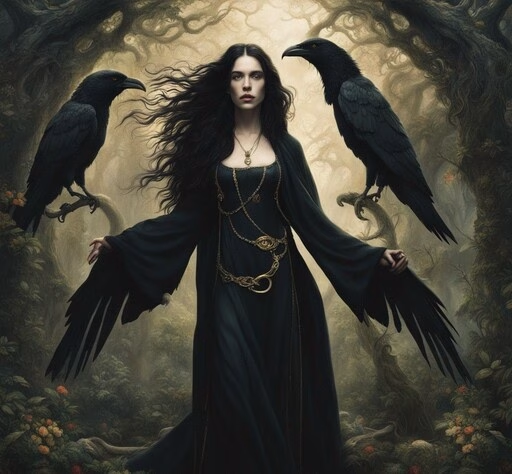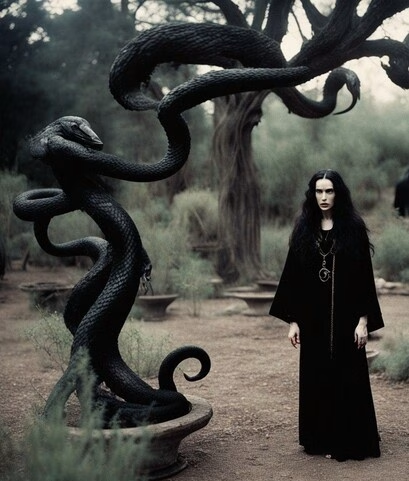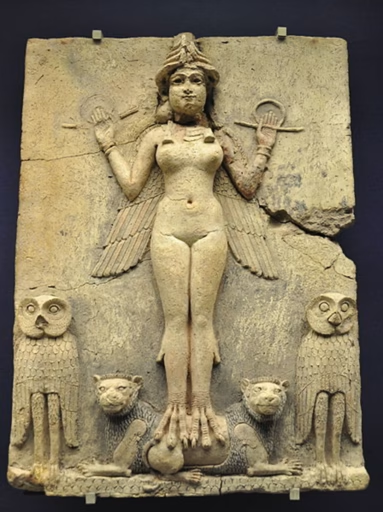The Origins of Lilith: Demon or Divine?

Lilith’s legend is as ancient as the shadows she walks in. Her origins trace back to Mesopotamian mythology, where she was feared as a night demon, a storm spirit, and a bringer of death. Found in Sumerian, Akkadian, and Assyrian texts, she was depicted as a winged, predatory figure who preyed on the vulnerable,pregnant women, newborns, and those who dared cross her path.
But it was in Jewish folklore that Lilith’s story took its most haunting form. There, she was not just a demon—she was the first woman, created from the same dust as Adam, making her his equal. Unlike Eve, who was formed from Adam’s rib, Lilith refused to be subordinate. And for this defiance, she became something far more powerful.
Lilith in Jewish Folklore: The Rebellious First Woman

Lilith’s defiance began in the Garden of Eden. She rejected Adam’s demand for dominance, refusing to lie beneath him during intercourse. She saw herself not as an obedient wife, but as his equal. When Adam tried to impose his will, she spoke the ineffable name of God and vanished, leaving paradise behind.
She fled to the Red Sea, where demons became her consorts and bore her monstrous offspring. In her absence, God created Eve, obedient, submissive, and fashioned from Adam’s own body. But Lilith’s exile did not mean her silence. In her fury, she swore vengeance on the children of men, vowing to take the lives of newborns in the night.
The Demonization of Lilith: Fear of Female Power

Lilith’s transformation from rebellious woman to demoness was not just myth—it was a reflection of patriarchal fear. In Kabbalistic and medieval Jewish texts, she became the consort of Samael, the Angel of Death, a being of chaos and seduction who lured men into forbidden desires.
She was blamed for nocturnal emissions and erotic dreams, accused of seducing men in the dark and stealing their seed to create more demonic offspring. Her name was whispered in fear, her image used to control women who strayed too far from obedience.
To ward her off, amulets bearing the names of three angels-Senoy, Sansenoy, and Semangelof-were placed above cradles. These were meant to keep her from claiming the souls of infants, a testament to how deeply her legend instilled fear.
Lilith’s Modern Revival: From Demon to Feminist Icon

The story of Lilith did not die in ancient texts. Instead, she rose again, transformed by those who saw in her something other than horror. Feminists reclaimed her as a symbol of independence, a woman who refused to be controlled, demonized only because she would not submit.
In literature, she appears in the poetry of Dante Gabriel Rossetti and Sylvia Plath, embodying both beauty and destruction. On neo-pagan and Wiccan traditions, she is honored as a goddess of sexual freedom, female power, and rebellion.Concerning art, she is depicted as a dark, enigmatic figure,both feared and revered.
The Enduring Legacy of Lilith

Lilith’s myth has never been static. From an ancient demon to a medieval seductress, to a modern icon of defiance, her story mirrors society’s evolving view of female power. She is the woman who refused to bow, the shadow that lingers in patriarchal nightmares, the symbol of unchained desire and untamed strength.
Whether seen as a demoness or a goddess, Lilith’s presence endures. She reminds us that myths are not just stories,they are reflections of what we fear, what we suppress, and ultimately, what we become.

